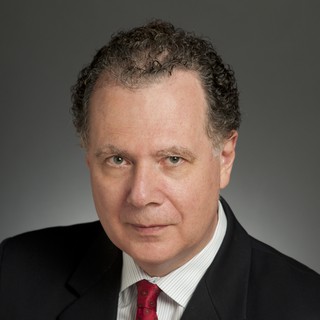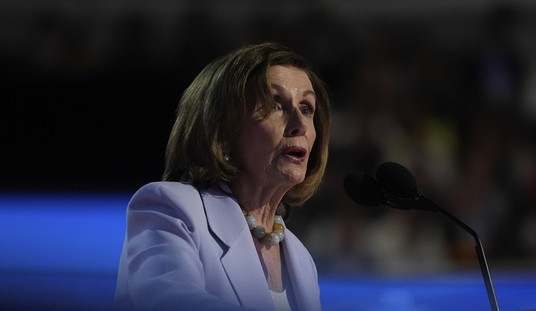The Benedict Option: A Strategy for Christians in a Post-Christian Nation, by Rod Dreher. Sentinel Press, 262 pages with index. $25.00
There is something inherently odd about the Benedict Option, the view that Christians should retreat from the world into small and tightly knit communities where they may live a Christian life with a minimum of disturbance from the evil side of modernity. Christianity by its nature has a universal mission. It speaks to the evil of our age that devout Christians want to encyst themselves against the secular world.
Rod Dreher, a prominent conservative writer, describes his Benedict Option as follows:
We live liturgically, telling our sacred Story in worship and song. We fast and we feast. We marry and give our children in marriage, and though in exile, we work for the peace of the city. We welcome our newborns and bury our dead. We read the Bible, and we tell our children about the saints. And we also tell them in the orchard and by the fireside about Odysseus, Achilles and Aeneas, of Dante and Don Quixote, and Frodo and Gandalf, and all the tales that bear what it means to be men and women of the West.
Dreher’s book has both the charm and merit of a participant’s account of the practicalities of withdrawing from the world. The first half of the book tries to account for the decline of Western civilization, an issue to which I will return later; the strongest chapters come later, recounting the experience of the religious who have tried to separate themselves from secular society, and exhorting the reader to embrace work, risk, and faith. Christians should be prudent, that is, not seek needless career martyrdom in pursuit of principles where victory is impossible; they should save themselves for family and community. Where believers are driven out of certain professions by the new secular inquisition, Dreher says, they should instead be entrepreneurial. Christians should rediscover the trades, where the religious can make a living without signing on to secular ideology. They should buy from other Christians and help Christians find employment.
These examples and exhortations will be of great help to religious people who find it impossible to protect their children from the plagues of pornography and commercialism that erode the content of contemporary life. Dreher proposes sensible, well-considered measures to achieve family and community independence from mainstream society rather than radical demonstration.
Jews have no business telling Christians how to conduct their lives, but there is something in the Jewish experience that resonates with the idea of withdrawal from the mainstream of society. When I speak to Christian groups the question I hear most often is: “How do the Jews keep their children in the fold?” The answer, of course, is that most of us don’t. As the joke goes, the difference between Donald Trump and a liberal Jew is that Trump has Jewish grandchildren.
But Orthodox Jews succeed in keeping their children in the fold, to a greater extent, at least, than any other identifiable religious group in the United States. The survey data suggest that about two of three children born to observant families become observant adults. They do this by maintaining their own institutions and, where that is not practical, their own well-defined enclaves in such institutions as major universities. Observant Jews mainly attend Jewish day schools (I do not personally know any Orthodox home schoolers). They marry young, usually in their early twenties. Orthodox Judaism has one major university, New York’s Yeshiva University, but Orthodox students tend to cluster in other universities where they can find a daily minyan (prayer quorum), kosher food, and above all prospective Jewish mates.
If Hitler had not invaded Poland, the religious Jews of Poland no doubt would still be in their shtetls living a quiet life of intense observance and sacred study. The robustness of that culture still amazes; it has been recreated in several neighborhoods of Brooklyn, the Five Towns of Long Island, Lakewood, New Jersey, and other enclaves. Some 400,000 Jews read the entirety of the 100-volume Talmud in a seven year cycle of one folio page per day.
Cultivating religious institutions and informal networks that sustain faith, fellowship, and family is the only viable strategy for religious survival. That is extremely hard to do and entails many dangers. Pope Benedict XVI argued throughout his career that the Catholic Church must shrink to a core of believers who are willing to assume the yoke of faith. As he wrote in his 1996 interview book The Salt of the Earth, “We might have to part with the notion of a popular Church. It is possible that we are on the verge of a new era in the history of the Church, under circumstances very different from those we have faced in the past, when Christianity will resemble the mustard seed [Matthew 13:31-32], that is, will continue only in the form of small and seemingly insignificant groups, which yet will oppose evil with all their strength and bring Good into this world.” I do not know why Benedict abdicated, but the plain fact is that he was replaced by a pope who compared the Church to a giant triage tent on a battlefield, taking in all the wounded of the world. The Big Church concept prevailed against what might be called a Benedictine approach, if not quite the Benedict Option envisioned by Alasdair MacIntyre.
As a practical matter, homeschooling isn’t a good option for most parents, not only because they may not be qualified to teach, but because children learn more from each other than they do from their teachers. Dreher cites Jewish education and the diligence of students at Yeshiva University, but he does not mention how expensive it is to live the simple life outside the orbit of the secular world.
Jewish education is costly because it requires the service of professionals. Modern Orthodox Jewish students tend towards well-compensated professions in anticipation of the high cost of educating their children. The Modern (or university-educated) Orthodox embrace secular education in parallel to Jewish learning, and are one of the most successful communities in the United States. They need to be. As noted, marrying young is the only reliable way to insulate a community against the temptation of easy hook-ups. But that requires parents to support their married children for a considerable period of time.
Among ultra-Orthodox Jews, the majority is composed of Hasidim, and most of them reject secular culture. Many speak Yiddish rather than English at home, and watch Yiddish soap operas, read Yiddish adolescent fiction, and so forth. Many of the Hasidim make do with purely religious education at low cost, but a high percentage of them are very poor. The Satmar Hasidic sect’s enclave of Kiryas Joel in Orange County, New York, had the highest poverty rate in the nation as of 2008. They are also heavily dependent on public assistance. The Williamsburg neighborhood of Brooklyn is one of the highest recipients of rental assistance vouchers in New York City, with subsidized tenants making up half of all households in some census tracts.
This is an untenable (and in my view unfortunate) state of affairs. Before World War II, Hasidic communities supported themselves. The Holocaust wiped out the religious life of Eastern European Jews, and persuaded many of the survivors that every boy should become a full-time Torah scholar to replace the many thousands who were murdered during the war. In Israel, the ultra-Orthodox are returning gradually to the workforce, and it is only a matter of time before this happens in the United States.
Religious Jews, in short, illustrate how difficult it is to insulate a religious community. I do not know whether Christians who contemplate a withdrawal from society anticipate the challenges they will encounter. A relative handful of committed and competent parents now home-school their children, but a larger move to a Benedict Option of sorts will require schools, not to mention teacher-training colleges, adult education centers, publishing houses, and, eventually, universities.
There might not be quite as much to go back to as Rod Dreher believes. His account of our circumstances is Romantic in the technical, 18th century meaning of the term: He longs for a bygone age of faith centered on the Roman Church that was eroded by doubt and overthrown by secular evolution. He relies on Charles Taylor’s account of medieval “metaphysical realism,” namely “the principle that all things exist and have a God-given essential nature independent of human thought Realism holds that the essence of a thing is built into its existence by God, and its ultimate meaning is guaranteed by this connection to the transcendent order.”
The “essence” of which Taylor speaks is bound up with the idea that collections of things, or universals, have a metaphysical existence independent of the individual members of the collection. That is what William of Occam denied. Neither Plato’s theory of Forms nor Aristotle’s theory of Universals ever quite worked, as Parmenides makes clear to the young Socrates in Plato’s eponymous dialogue, and Aristotle acknowledges in his Metaphysics (990b17-079a13). At the age of 18 months my older daughter used the term “Wah-Wah” to refer to any four-legged animal, before she could differentiate between dogs and cats. Did she fail to grasp the essence of dogs and cats, or merely accept an arbitrary name for the two beasts? Metaphysical realism says the former, Nominalism the latter.
The same problems that Plato and Aristotle encountered persist through the 20th century in the form of paradoxes in set theory. Do infinite sets have an independent metaphysical existence or are they simply arbitrary constructs by the mathematicians? That is related to the famous problem of the Continuum Hypothesis, which Kurt Gödel and Paul Cohen showed to be independent of any known system of mathematical logic. Georg Cantor, who discovered transfinite numbers and demonstrated that there are different densities of infinity, hoped to prove that the rational numbers and the real numbers constituted the first two such densities, and that no other kind of infinity could be identified in between them. Gödel’s answer appears to be that there are an infinite number of infinities, but we do not know in what order to put them, a conclusion that pleases neither Realists nor Nominalists, and has not created a consensus among mathematicians, let alone philosophers.
It wasn’t William of Occam who overthrew the medieval order, though, but Leibniz and Newton, who demonstrated — against Aristotle — that there are indeed objects in our mind that are not in our senses that nonetheless are provably real: for example, the arbitrarily small (“infinitesimal”) increments of movement of cannonball in flight that the Calculus can sum up into a positive number. 15th- and 16th-century Aristotelians bitterly opposed the introduction of irrational numbers into mathematics for the same reason. That is why mathematical physics became a Protestant venture (and later a Jewish one), and why there are few Catholic physicists of note between Galileo and de Broglie. That is also why Kant created a patch for Aristotle’s Metaphysics in the form of synthetic a priori reason, which in turn was blown up by advances in mathematics in the middle of the 19th century. I summarized the issues in a recent article for the Jewish quarterly Hakirah. Nominalism and it cousin Conceptualism throw up their hands at the intractable contradictions of metaphysical realism, a churlish response, perhaps, but not by any means the source of the problem.
The scientific and philosophical revolution of the 17th century was anticipated by the Augustinians at 14th-century Oxford, known as the Oxford Calculators, who invented an approximation of the Leibniz-Newton calculus (this becomes the so-called “Trapezoidal Method” to calculate the displacement of an accelerating object, recently found to have been discovered by ancient Babylonians). Their student was John Wycliffe, the first English translator of the Bible and the rightful founder of the concept of direct revelation from Scripture. Through his influence on the Reformers Wycliffe may be said to be the gravedigger of the medieval order.
Unlike Rod Dreher, I don’t see the Middle Ages as a model to return to. The mathematicians and physicists overthrew Scholasticism, and the philosophers came trundling along afterward to sweep up the pieces. Thanks to them we live in a world where no-one need starve, where mothers need not bury half their infant children, and where I can tap the entire store of human knowledge from the device on which I am now writing. The theology that attended the scientific revolution assigned extraordinary freedom and responsibility to individuals — sola scriptura required that every individual read the Bible and receive revelation without priestly mediation. The political manifestation of this idea is a republic with neither anointed monarch nor established church, namely the United States of America. The Jewish contribution to the emergence of freedom was enormous, as Eric Nelson and other historians document.
Of course, we have used our freedom badly. Freed from the constraints of traditional society we have whored after foreign gods and immersed ourselves in the sexual polymorphism of the ancient pagan world. To repudiate the ambient culture and seek a refuge in protective enclaves is a reasonable response, and in that respect I sympathize with Dreher. But that requires of us an individual initiative and commitment that is wholly alien to the medieval world, and entirely modern in outlook. If we place restrictions upon our behavior we do so out of free will and not by external compulsion.
America’s regenerative powers are unique; if we are (as Lincoln said) an almost-Chosen people, our capacity for comeback is almost miraculous. The Slave Party dominated the White House between 1800 and 1860, yet America elected Abraham Lincoln and undertook a Crusade (that is the right word) for freedom in 1861. We languished in Depression and isolationism during the 1930s but emerged as the most powerful nation on earth and the leader of the Free World in the 1940s. We sank into what Jimmy Carter called a national malaise during the 1970s but came back with the Reagan Revolution.
It is good to insulate one’s community and family from the depredations of post-Christian culture, but wrong to give up on the United States. By the Grace of God we have gotten out of deep ruts before. Who is to say that His Grace for this country has come to an end?










Join the conversation as a VIP Member